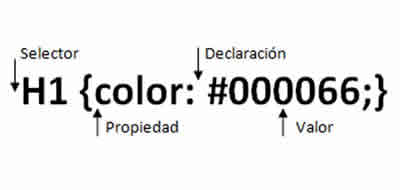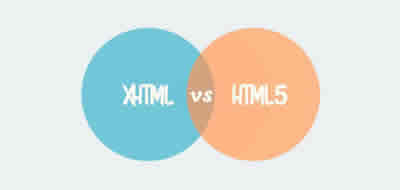IT projects - Types, examples and management
A project consists of a set of interrelated activities, with a beginning and an end, that uses limited resources to achieve an objective.

Whatis a Project?
"A projectis a set of interrelatedactions and aimed at achievingresultstotransformorimprove a situation in a limited time and withbudgetedresources."
It's born in response to the need to fulfill the objectives of theorganizationswithinitspurpose.
Project Characteristics
- It focuses on producing or achieving a benefit or objective
- It is temporary, has a beginning and anend
- There is a clear achievablegoal with in a limited period
- A planning process is required
- A set of activities or tasks are identified
- It presents a logical sequence of activities or phases
- It requires the involvement of people and specialists in function of the specific needs of eachactivity
- It requires many resources to develop the activity
Elements of a Project
Activies
These are the tasks that must be executed to reach together to a preset end (desired object); for example:
- Collect information
- Perform diagnostics
- Develop a design
- Programming
- Writing procedural manuals
- Etc.
The activities in the project have a logical sequence.

Resource
These are the elements used to make the execution of each task:
- Hardware
- Software
- Services
- Capital investment
- Personnel
- Information
- Money and time

Direct Costs
Are those that can be identified in the project and are associated with, these are fixedor variable (materials, labor).
Indirect Costs
Are those who are involved in the project, but have a relative importance (rent, licenses, services).
Fixed Costs
These are costs involved, scheduled or planned incurred to provide and maintain the operational capability of the project.
Variable Costs
Are those that fluctuate according to the project activity.
Types of projects
For its development:
- Unique projects. They are one-off, begin and end in them selves
- Designed to achieve not repetitive objectives
- Ongoing projects. They are repetitive
- Designed to produce or achieve similar goals
For its extension:
- Long term. Periods exceeding three years
- Medium term. Periods between one and three years
- Short term. Periods under 1 year
Services:
- They are long-term and user-defined
- They can be quantitative (benefits) and qualitative (quality)
Production:
- Short-termed
- Usually quantitative (cost, schedule, performance)
Strategical
- Long-termed
- It affects the organization structure
- They are qualitative (coverage, integration, image)
Project management
"Articulate the method to achieve a unique and non-repetitive objective with a clear beginning and end using techniques provided by the management"
Functions of project management
Schedule:
Determine what results the organization has to obtain and develop appropriat estrategies to make it happen.
Organize:
Specifies how planned results are achieved, assigning the tasks identified in the planning and equipment to members of the organization to achieve those objectives.
Control:
Checkup of expected results, correcting the deviations detected.
Manage:
Lead and motivate members of the organization, so that the objectives are achieved.
Lifecycle of a project
It includes four stages:
- Identification
- Design and developing
- Implementation or execution
- Evaluation or completion
The process of planning and managing a project can be represented as a cycle. Eachphase of the project relates to the following.

Identification
Understand the identification of factorsor critical variables based on problems, needs, demands and present initiatives.
To identify where the project should go we need to know whos hould benefit and what their needs are.
The "needs analysis" will providea general overview of the problems. The "capacity analysis" will help identify which problem the projects hould address. It corresponds to the diagnostic phase.
Design
The project will be defined in direct relation to the problems, needs or demands that we detect in our diagnosis
The project's format structureobeys to the needs of logically organize and guide the actions, allowing the evaluator with the most accurate information possible.
Standard format:
- Title
- Defining objectives
- Foundation or justification
- Project description
- Matrix of activities
- Budget
Implementation
This phase can also be understood as project management (resources and processes).
It is the on going proof of the planned or stipulated actions in our planning, itmeans the allocation of resources.
Project planning should be adjusted where necessary.
Evaluation
It is the action that allows us to measure or estimate the degree of success or failure of the proposed objectives.
It allows us to view and correct problems or difficulties and correcton time the on going processes.
The evaluation should take place after completion of the project. To assess their long-term impact and check if itissustainable, it can be checked after a few months or years after project completion.
Factors of success
The projects sometimes fail because they are badly planned and do not take into consideration some important factors, particularly the needs and points of view of interested persons.
Factors of success of projects
- Relevance
- Viability
- Sustainable
- Effectiveness
- Efficiency
Relevance
It is the degree of attention to the user's problems
- Clearly defined beneficiaries or users
- Description of user problems
- Medium and long termo bjectives are part of development plans
- The results suggest solutions to the services and products required
Viability
It includes the possibility of the project being carried out.
- Logical consistency of the Project
- Are the identified risks acceptable?
- Institutional and management capacity
- Is there the ability to implement the project?
- The activities proposed are sufficient to achieve the results
Sustainable
Referred to the continuity of activities and project benefits.
- Continued political support toorganizations
- Application of technologiesconsistentwiththeenvironment
- Capacity of the implementing identity to give continuity to the results
Effectiveness
It is the degree to which the objectives are achieved in the expected time and quality.
- Does the project achieves the effect proposed?
- Does the status of the target population change?
Efficiency
It is the degree to which the objectives are achieved at lower cost.
Comparison of the results with the resources used.
CITE ARTICLE
For homework, research, thesis, books, magazines, blogs or academic articles
APA Format Reference:
Delgado, Hugo. (2019).
IT projects - Types, examples and management.
Retrieved Nov 11, 2025, from
https://disenowebakus.net/en/software-project






